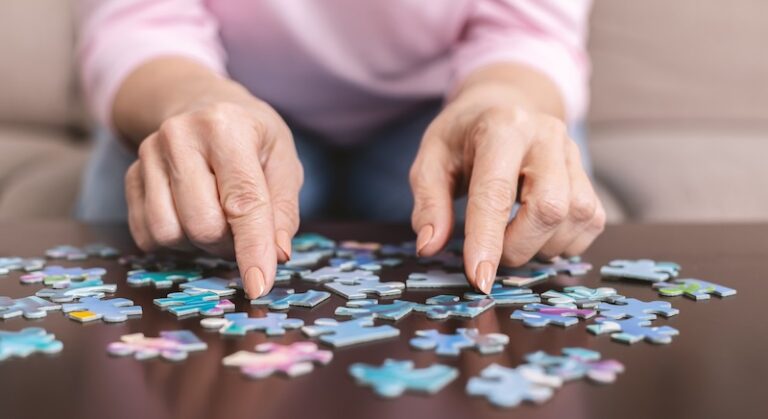7 Ways to Make Your Memory Care Visits More Meaningful and Enjoyable for Your Loved One
Navigating the Challenges of Connecting with Memory Care Residents: A Family Guide
At Right Direction Senior Living Solutions, we understand that visiting a loved one in memory care can stir up a mixture of emotions. As specialists in senior living placements with years of experience guiding families through memory care transitions, we’ve witnessed firsthand the profound impact that thoughtful, well-planned visits can have on both residents and their families. Our team regularly works with the best memory care communities in the area, giving us unique insights into creating positive visiting experiences. While the journey of memory loss can be challenging, your visits remain vitally important to your loved one’s emotional wellbeing and quality of life, even if they may not always remember the details afterward. This guide shares practical strategies we’ve gathered from families, caregivers, and memory care experts to help you create more meaningful connections during your visits.

Understanding the Memory Care Environment
What Makes Memory Care Different
Memory care communities are specifically designed to support individuals with Alzheimer’s, dementia, and other cognitive conditions. Unlike traditional assisted living, these environments feature enhanced security, specialized activities, and staff trained in memory care techniques. Understanding this specialized environment helps set appropriate expectations for your visits.
When visiting, you may notice secured entrances and exits to prevent wandering, calm and simplified décor with clear signage, structured daily routines that provide residents with predictability, and activity areas designed for cognitive stimulation. Understanding the purpose behind these features helps you appreciate how the environment supports your loved one’s specific needs. Many families report feeling more comfortable during visits once they understand the intentional design of these communities, allowing them to focus on connecting with their loved one rather than worrying about the surroundings.
Preparing for a Successful Visit
Timing Is Everything
Working with your loved one’s natural rhythms significantly impacts visit quality. Most memory care professionals recommend scheduling visits during your loved one’s best time of day. For many residents, this is mid-morning or early afternoon, avoiding the “sundowning” period when confusion and agitation often increase.
Before visiting, consider calling the care team to ask about your loved one’s day and inquire about recent mood patterns or health changes. Consider joining during structured activities that your loved one enjoys, and keep visits shorter (30-60 minutes) but more frequent when possible. Families who adjust their visiting schedule to align with their loved one’s best times of day consistently report more positive interactions and meaningful connections.
Creating Meaningful Interactions
Activities That Foster Connection
Bringing purpose to your visit helps create structure and reduces anxiety for both you and your loved one. The most successful visits often incorporate simple, failure-free activities that stimulate the senses and tap into preserved abilities.
Try creating connections through looking through photo albums with simple, clear images (avoid asking “Do you remember…?”), listening to favorite music from their younger years, engaging in simple art projects like watercolor painting, bringing seasonal items to touch and discuss, or reading aloud from favorite books or short stories. Memory care professionals have observed that activities engaging multiple senses often trigger positive emotional responses, even in residents with advanced dementia. These sensory experiences can create moments of joy and connection that transcend verbal communication.
Managing Emotional Responses
When Visits Become Challenging
Even with careful planning, visits can sometimes be emotionally difficult. Your loved one may not recognize you, may become agitated, or might exhibit behaviors that feel hurtful. Remember that these responses stem from the disease, not from your loved one’s true feelings.
When difficult moments arise, stay calm and speak in a gentle, reassuring voice. Consider changing the subject or environment if a topic causes distress, and take a short break if needed, perhaps walking together in a garden area. It’s important to follow their emotional reality rather than correcting misperceptions, and know when to end a visit that’s becoming too stressful for either of you. Many family members find that meeting their loved one in their current emotional state, rather than trying to bring them back to reality, leads to more peaceful and meaningful interactions.
Involving Care Partners
Building Relationships with Staff
Developing strong relationships with your loved one’s care team enhances the quality of both your visits and their daily care. These professionals can provide valuable insights about your loved one’s routines, preferences, and communication styles.
Consider learning the names of regular caregivers and greeting them warmly. Share information about your loved one’s past interests and life history, and ask specific questions about recent activities or behaviors. Express appreciation for their care efforts, and consider bringing occasional treats for the care team (with community permission). Our placement specialists at Right Direction Senior Living Solutions always emphasize the importance of this partnership. The caregivers who spend each day with your loved one hold valuable keys to understanding their current world, and when families and staff work collaboratively, residents receive the most personalized, compassionate care possible.
The Power of Consistency
Maintaining a regular visiting schedule helps provide stability for your loved one, even if they don’t explicitly remember your visits. Research shows that emotional memories often persist even when factual memories fade, meaning your visits create positive feelings that linger long after you’ve gone.
Consider creating a simple visiting routine with consistent days and times when possible. Begin and end visits with the same greeting and farewell, and bring familiar objects or photographs that remain consistent. Keeping a visitor’s journal to track successful approaches can also help you refine your visiting strategy over time and share successful techniques with other family members.
Ready to Find the Perfect Memory Care Community for Your Loved One?
At Right Direction Senior Living Solutions, we’re committed to guiding families through every step of the senior living journey. Our free placement services can help you find a memory care community that supports both residents and visiting family members with compassion and expertise. Contact us today to speak with a senior living advisor who understands the unique challenges of memory care and can help point you in the right direction.






